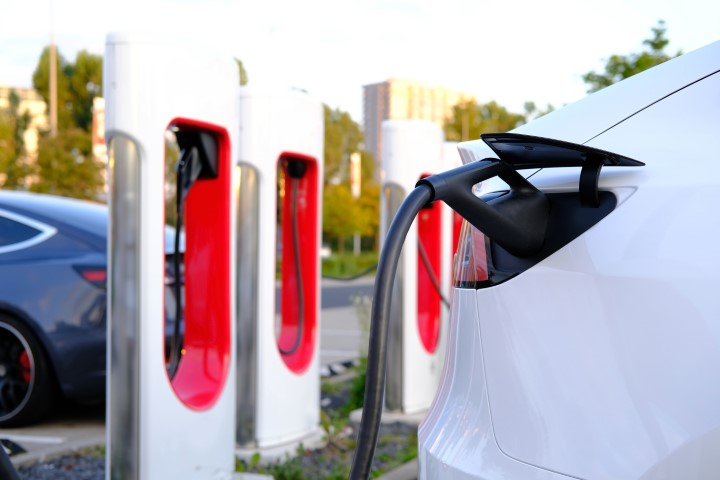How Often Should I Change My Oil?
Those who read our Healthy Oil blog series from this past year may remember the advice we gave on the critical issue of "how often should I change...

A few years back, we wrote some blogs talking about trends with the production of electric vehicles. Similar to the assumptions surrounding self-driving vehicles, electric vehicles were thought to be an inevitable coming trend - not if, but when. That ‘when’ is coming closer and closer to the horizon, and its progress is being accelerated by government legislation - both Federal and state. California just recently (September 2020) codified rules that require a transition over to zero-emission vehicles (ZEVs or EVs) by 2045. Or 2035 or 2041, depending on what kind of vehicle you’re talking about.
![]() This is just the beginning. It appears like our country, and the rest of the world alongside it (or ahead of it, in many cases) have determined that non-internal-combustion engines are going to be an indispensable part of reducing our collective carbon footprint and lessening the damage we’re doing to the environment. Transportation accounts for 28% of U.S. carbon emissions. Many think we're near a tipping point where action that isn't taken very soon won't be action at all - it will be too late to matter. We’re not going to reduce those carbon emissions as a nation without making a substantial dent in this area. Analysts project the need to cut our carbon emissions by 50% just by 2030. So the time is now to make needed and significant changes a reality.
This is just the beginning. It appears like our country, and the rest of the world alongside it (or ahead of it, in many cases) have determined that non-internal-combustion engines are going to be an indispensable part of reducing our collective carbon footprint and lessening the damage we’re doing to the environment. Transportation accounts for 28% of U.S. carbon emissions. Many think we're near a tipping point where action that isn't taken very soon won't be action at all - it will be too late to matter. We’re not going to reduce those carbon emissions as a nation without making a substantial dent in this area. Analysts project the need to cut our carbon emissions by 50% just by 2030. So the time is now to make needed and significant changes a reality.
What’s it going to take to fully realize such a dramatic, even historic, shift from internal combustion engines to fully electric vehicles? Certainly, it will take additional significant changes across a number of areas, starting with a significant change in our nation’s “charging infrastructure”.
Charging infrastructure means the distribution and availability of locations to charge these electric vehicles. If you’re going to have all-electric vehicles that can't use fuel, you have to have places to charge them. That’s perhaps the primary criticism from naysayers who may not be optimistic about this direction. They envision traffic jams in the middle of winter with electric cars and trucks dead in the road (no charge).
The reality rarely ends up matching the worst case. If nothing were to change, it would be a concern at this point. But here’s the thing - the market always adjusts. Go back 100 years and think about what had to happen to get us from then to now. There are plenty of things we take for granted now that weren’t around 100 years ago. The market always adjusts and comes up with solutions to problems that crop up in whatever direction that things are headed. Sometimes (like with Tesla), it takes a little bit of partnership between the private sector and government - because the private sector rarely does everything completely without help. But the point is we’ll get there. We always do. Sometimes, it even happens faster than we could have imagined.
Perhaps some of the objections of the naysayers come from not being able to conceptualize, or put into perspective, how many charging stations we’ll need to service all these millions of ZEVs.
For example, the government is proposing to spend $15 billion to build 500,000 charging stations, part of a larger $174 billion package to “get consumers to choose electric vehicles”. What do 500,000 stations look like? A lot? Not that many? We don’t know what all that means. The numbers don’t mean as much to us as what we think of our experiences.
For perspective, compare this to just 115,000 gas stations. While we sometimes get concerned about running out of gas, especially if we’re in unfamiliar places, we don’t usually worry too much about finding a gas station. The Biden Administration is pushing for 500,000 charging locations, more than 4x the number of gas stations we currently have. If, for every gas station you came across, you had run across 4 or 5 charging locations, how much concern would you really have about finding a place to charge your car?
In order to know how many stations we might need, we must have a handle on the number of electric vehicles that will be using them. Right now, EVs are pretty rare - only about 2% of vehicles. That’s getting ready to change - BIG TIME. In the next 10 years, by 2030, analysts are predicting 35 million EVs. That’s from a starting point of just 300,000 EVs sold in 2020.
We won’t reach those figures if consumers aren’t confident they’ll have enough places to “fuel them up”. So, sure, the government thinks 500,000 will be enough. Now, compare these “figures of optimism” from the government with what industry experts have to say about what’s going to be needed and where.
At the outset, we have to acknowledge that questions like how many stations we’ll need and what kind they should be (see below), aren’t the only considerations. There are other things (mostly local) that planners will need to account for. How will the one or two or twenty charging stations affect the local power grid in the immediate area? Are there any local regulatory rules they’ll have to account for? This will certainly take some planning on many levels.
All of this also speaks to the need to have, in addition to charging stations out on the road, the ability to have chargers in place wherever people park their vehicles for extended periods of time. It’s very likely that seeing chargers at home and at work, maybe even the mall parking lot, will become commonplace in time. In 2040, people might not even waste two thoughts about it - they’ll just expect to see them there.
If we’re going to have x million EVs on the road by 2030, will 500,000 charging stations be enough? We know the networks of public charging stations will need to expand dramatically. But by how much?
Groups like the National Renewable Energy Laboratory have dug into the issue, and they estimate that for every 1,000 all-electric vehicles out on the road, they’ll need between 3-4 DCFCs (the fast outlets) and 40 Level 2 charging ports. Remember, though, that those are charging ports or outlets, not stations. Stations can have more than one of these like they have more than one gas pump. Still, if it’s assumed the projection of 35 million EVs ten years from now is accurate, we’ll need about 50,000 DCFCs and over 1 million Level 2 ports.
There will need to be overhauls to the electrical grid to account for this. A DCFC can pull tremendous amounts of power, so they will have to plan for that, maybe even put some money into upgrading the electrical grid transformers, substations, and transmission lines. All of this sounds like a lot of work, but we shouldn’t be surprised. We’re talking about a huge shift that may fundamentally change life and business in our country. We should expect that it will take effort on multiple levels.
There are initial outlay costs for building the outlets and then there’s the cost for the electricity. To put in 50,000 DCFCs and 1 million Level 2 charging ports, you’re looking at probably $4-5 billion for the DCFCs and $25 billion for the Level 2 ports. Plus there will be expenses for the needed overhauls to electrical grids that we mentioned.
These things always have details that have to be worked out. That task is for other people than us. It’s pretty certain that we’ll all hear more about these considerations in the coming days.

Those who read our Healthy Oil blog series from this past year may remember the advice we gave on the critical issue of "how often should I change...

The nation's largest car club, AAA, released its Christmas season driving forecast on December 16th. What's the outlook? Lots more cars on the road,...

This is the first of a two part series on Engine Sludge. Dont miss Part 2: How to Remove Engine Sludge. Car owners who do a lot of stop and go...